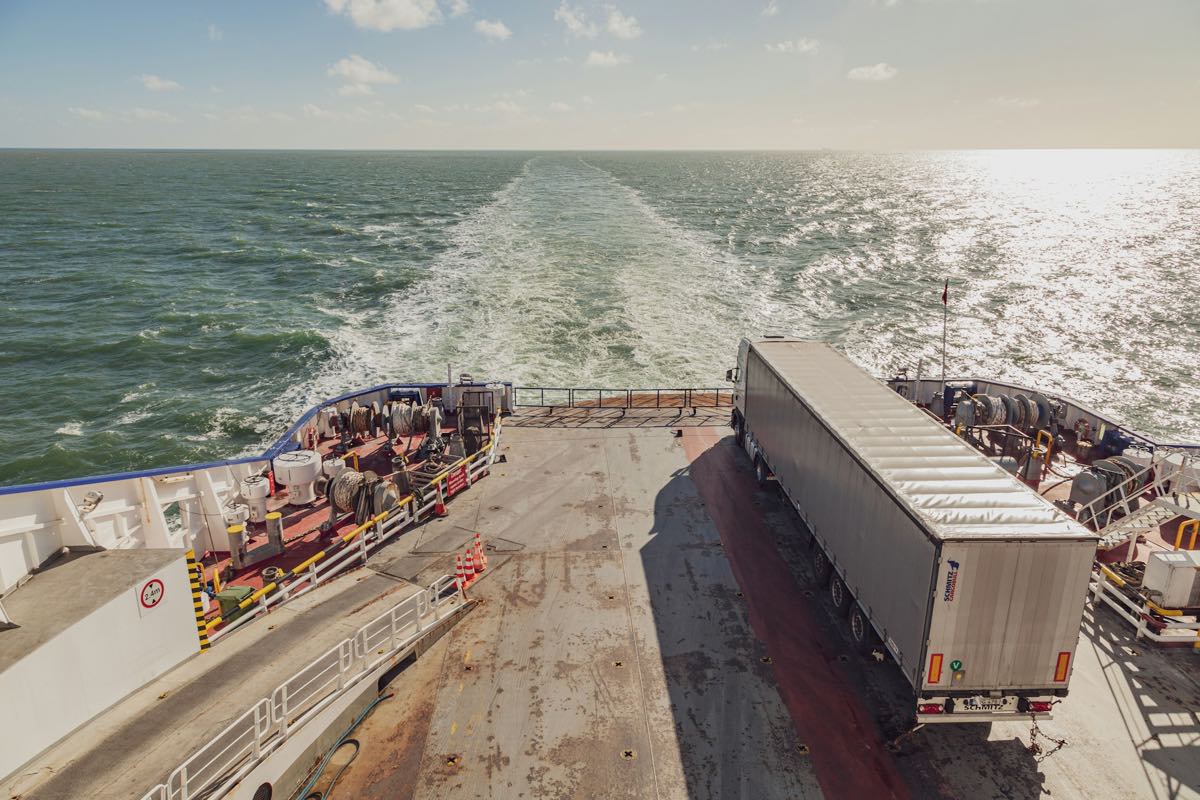Managing all the costs of car shipping from one coast to the other is like navigating a tangled web of logistical challenges and varying cost factors. The trip starts with a decision between open and enclosed transportation, each with unique advantages and costs implications. The most popular and economical alternative, open transit, exposes cars to the weather but saves a lot of money. On the other hand, enclosed transportation is more expensive but provides unmatched protection from the elements and road debris, making it perfect for brand new, luxury or classic cars. A significant factor in determining cost is the distance traveled, independent of the mode of transportation. Longer routes are generally more expensive overall, but there may be a benefit for drivers who are moving cars over long distances: the cost per mile may drop.
Seasonality, which causes prices to change throughout the year, further complicates the cost calculation. Summertime brings a spike in demand as people go on new experiences and families move, driving up rates. On the other hand, while the winter season may provide more affordable prices, it also brings additional difficulties, such as the possibility of delays brought on by bad weather. It’s essential to comprehend these seasonal patterns in order to schedule your shipping to strike the greatest possible balance between convenience and expense. The degree of service, which can vary from door-to-door delivery to terminal-to-terminal shipment, also affects the total cost. Door-to-door delivery is the most convenient but also the most expensive; terminal-to-terminal delivery involves more work on the part of the client but can save a lot of money. Finding the most appropriate and economical shipping option requires striking a balance between your needs and financial limitations, which is the key to navigating the waters.

Once all aspects of auto shipping are understood, car shipping estimates / quotations become only the starting point for car shipping companies as they initiate the competitive bidding process among carriers. This initial quotation frequently changes depending on a number of variables, such as the length of the journey, the kind and state of the car, and any extra services needed. Open transportation is usually the most affordable option, costing an average of $1,325, while enclosed transportation is more expensive but offers more security, costing an average of $1,625. These numbers, however, are only the beginning; real prices might vary greatly depending on a number of intricate factors.
Important Elements Affecting Price:
- Carrier Bidding: The ultimate price can be greatly influenced by this auction-style procedure. Carriers put out their rates, which sets off an exchange of bids that determines the final price.
- Distance: Costs increase with longer distances. Shipping a car from New York to California will set you back significantly more money than a shorter trip like Chicago to Atlanta.
- Additional Services: There are several services that might cause the basic price to increase, such as faster shipment or additional insurance coverage.
- Vehicle Size and Condition: Because of the increased space they take up or the more work and equipment that is required for transportation, larger vehicles, such as SUVs or trucks, cars that have been modified, and cars that are not in functioning condition can all cause the price to increase to a higher rate.
To add even more to the usual expenses, shipping quotes might differ according to certain origin and destination locations. For example, the cost of shipping a car by open transport from the East Coast to the West Coast may be around $1,325, although it may be less or more depending on the specific locations, season, and carrier capacity. Enclosed transport is a premium service that comes with a greater cost; it is typically used for brand new, luxury or classic cars to guarantee their immaculate arrival since it provides improved protection against the weather and road debris.
To put it simply, comprehending the cost of car shipping necessitates taking a closer look at more than just the first estimate and taking into account all of the factors that interact to determine the final cost. Customers may use this information to adjust their shipping selections to meet their needs for speed and security while still staying within their budget.

Cleaning your car inside and out is the first step in getting it ready for cross-country shipping. This is about lessening the chance of harm or loss, not just about aesthetics. Take everything personal out of the inside to avoid losing it or having it damaged while being transported. To avoid confusion, it’s important to confirm with your selected provider if you can put anything in your vehicle and how much stuff can be placed in the trunk and under what circumstances. Some car shipping companies may permit a certain number of objects stored in the trunk.
- Removing Personal Belongings: Remove anything personal from the trunk and cabin in the vehicle, excluding any necessities that the carrier has approved. This guarantees adherence to transportation laws and lowers the possibility of theft or damage to your possessions. If you need to transfer personal items in the car, make sure your transport coordinator gives you permission beforehand.
- Vehicle Inspection: Together with the driver, thoroughly check the vehicle when they arrive for pickup. Pre-existing damage must be documented as part of this procedure to guarantee that an accurate record is maintained, which is essential for any insurance claims that may arise after delivery. Images captured from different perspectives can be used as further documentation of the state of the car prior to shipping.
- Signing the Bill of Lading: An essential document in the auto shipping procedure is the bill of lading. It functions as both a contract for the transportation of the car and a receipt for it. By signing this paper, you attest to the condition of the vehicle as it was found during the inspection. This contract, which describes the terms and circumstances of your car’s shipment, should be carefully read and understood before you sign.
It is possible to dramatically improve the safety and security of the vehicle while it is in transit by ensuring that these measures are followed meticulously. This will provide you with peace of mind until the car arrives.

For the sake of your wallet and your peace of mind, pick the best shipping option for your car. There are several options available, such as door-to-door shipping, terminal-to-terminal shipping, enclosed carrier shipping, and open automobile transport. The least expensive option is open automobile shipping, which exposes cars to the weather but saves a lot of money. For antique, sports, brand new, or premium cars, enclosed carrier transport offers protection from the elements, from flying debris from the road and higher limits of cargo insurance. While shipping from terminal to terminal might save money, it necessitates that you drop off and pick up your car at predetermined places. The highest level of convenience is provided by door-to-door shipment, which picks up and drops off your car at specified locations. Although delays might occur due to weather, traffic, and route, cross-country vehicle shipping typically takes seven to ten days.
- Open Carrier Car Transport: This is a cost-effective solution that exposes your car to the weather while cutting down on shipping expenses. It is a widely used option for regular cars and has the benefit of being readily available.
- Enclosed Carrier Car Transport: Enclosed transport provides additional protection for cars from weather and road debris and higher insurance coverage limits for those who want or need it. It’s a premium service that’s frequently selected for new, expensive, vintage, or luxury vehicles.
- Terminal-to-Terminal Car Shipping: This service, which has the potential to save you money, requires you to drop off and pick up your car at certain terminals. Although less practical than door-to-door delivery, it can still be a more affordable option. However, if there are no terminals near you, this option should be a last resort.
- Door-to-Door Car Shipping: This service picks up and delivers your car straight to the places you choose for the most convenience. It makes shipment hassle-free by doing away with the need to visit terminals.
Depending on your timetable, budget, and particular expectations, each solution offers advantages. Enclosed transport and door-to-door shipment offer more protection and convenience, whereas open transport and terminal-to-terminal shipping are more economical. Making an informed selection that fits your preferences for cost, convenience, and vehicle safety is made easier when you are aware of these possibilities.

The cost of shipping a car across the nation varies greatly depending on the distance traveled, but there is an intriguing trend that shows that the cost per mile tends to go down as the distance traveled increases. The efficiencies that carriers achieve across greater distances are reflected in this pricing model. For example, the typical cost of transporting a car 2,000–2,500 miles may be $0.37 per mile. On the other hand, this charge can decrease to about $0.33 per mile for trips longer than 3,000 miles, providing a more affordable option for long-distance transportation.
- Short to Medium Car Shipping Distances (500-1,000 miles): Because carriers have set expenses regardless of distance, shorter hauls are often more expensive per mile. The price per mile may range from $0.70 to $0.90 for various distances.
- Medium to Long Car Shipping Distances (1,000-2,000 miles): The cost-efficiency improves with increasing distance; costs may drop to between $0.50 and $0.70 per mile. This illustrates how the carriers were able to lower the per-mile fee by distributing their operating costs across a greater distance.
- Coast-to-Coast Car Shipments (Over 3,000 miles): With charges that range as low as $0.30 to $0.40 per mile, the efficiency peaks for the longest routes, such as coast-to-coast car shipping. Those that must ship cars over long distances will benefit from this price change.
- Car Shipping from California to New York: This route, which is frequently regarded as the pinnacle of cross-country transportation, demonstrates how distance affects cost. The fact that the average cost varies shows how shipping costs are subject to change depending on demand, route particulars, and seasonal considerations.
- Car Shipping from Texas to Florida: This well-liked shipping corridor benefits from high demand and carrier availability, perhaps enabling more competitive per-mile pricing, even though it is shorter than coast-to-coast routes.
The aforementioned examples highlight the intricate nature of auto shipping expenses can get and how crucial it is to have customized quotations for particular routes and distances. The main objective is to efficiently satisfy your auto transport needs by striking a balance between price, convenience, and time.

The average cost of shipping a car across the United States is subject to considerable seasonal variations, making timing an essential consideration in preparing a budget for your car transport needs. Prices rise in the summer because of the increase in demand brought on by college students and relocations. Winter, on the other hand, presents an opportunity for savings, with February usually having the lowest rates because of lower demand. Though poor weather might cause transportation routes to become blocked, the advantages of reduced prices during the winter can occasionally be countered by additional shipping delays. Knowing these seasonal characteristics can help you schedule your car shipping so that it meets your deadlines and budget.
- Summer Car Shipping: Prices rise in the summer due to high demand. The mix of family relocations to take advantage of the school vacation, college students returning home, and the holiday moves makes this the busiest time of year for auto shippers.
- Winter Car Shipping: The lowest car shipping prices may be found during this season; this is particularly evident in February. Nevertheless, weather may also affect travel times a great deal; snow, ice, and shorter days can all cause delays.
- Fall and Spring Car Shipping: Between the extremes of summer and winter, these transitional seasons provide a reasonable equilibrium. Fall sees a minor increase in demand as college-bound kids head out, while springtime prices start to rise as individuals start moving in preparation for summer.

Navigating the maze of cross-country car shipping is no small feat. With expenses shifting due to location, transit type, and seasonal fluctuations, the procedure might seem intimidating. A reliable, competitively priced service is possible with the correct knowledge and strategic approach. Choosing a trustworthy shipping company that recognizes these nuances and works hard to deliver customized solutions is crucial. This guarantees your vehicle’s safety, prompt delivery, and peace of mind.
At Ship A Car, Inc., coast-to-coast car shipping is outstanding. Customer satisfaction is this company’s first priority, and it offers a wide range of shipping services. Ship A Car provides the experience and resources to help you move, sell, or acquire a car across the nation. Open-air transport is cost-effective, whereas covered transit protects high-value automobiles. They also ship cars to Hawaii and Alaska, making no place out of reach.
Why use SAC for cross-country automobile shipping? Their unmatched client commitment is the answer. With Ship A Car, Inc., you’re working with a team of specialists dedicated to your vehicle’s safety, cost, and timely delivery. Their clear no-obligation quote approach offers the best price, demonstrating their fairness and value. Ship A Car promises a smooth experience with specialists that appreciate your vehicle. For trustworthy, effective, and affordable cross-country automobile transportation, use Ship A Car, Inc. Click here to find out more about the SAC Advantage.
Q: What’s the cheapest way to ship a car across the country?
A: The open carrier car transport option is the most cost-effective one, particularly when it comes to terminal-to-terminal delivery. When taking into account the entire expenditures involved, which include travel to and from terminals, door-to-door service will prove to be more cost-effective.
Q: How can I ensure the safety of my car during transport?
A: Choose an enclosed mode of transportation to provide additional protection against the elements and debris from the road. Despite the fact that it is more expensive, it provides peace of mind, particularly for brand new, classic or high-end vehicles.
Q: What factors affect the cost of shipping a car?
A: A variety of factors are taken into consideration, including the carrier bidding procedure, the distance, extra services, the number of vehicles, geographical variances, route difficulties, seasonality, the kind of transportation, as well as the size and condition of the vehicle.
*All data and car shipping rates found in this article are accurate at time of publication and subject to change.




